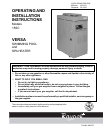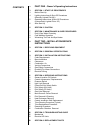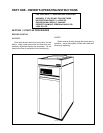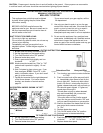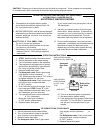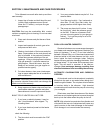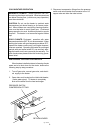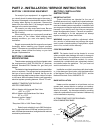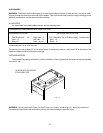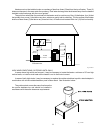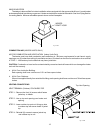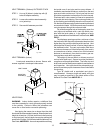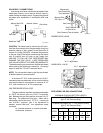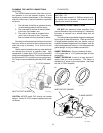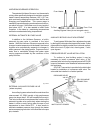
7
SECTION 3 / MAINTENANCE AND CARE PROCEDURES
4. Your pump strainer basket may be full. If so
remove debris.
5. Your filter may be dirty. If so, backwash or
clean filter. (To tell if your filter is dirty, the
gauge pressure will be higher than usual).
6. The pump may have lost it's prime. It may
be running dry, check the pressure gauge
on the filter. If there is no pressure; then
you are not moving water (or your gauge is
broken). Try to get the pump to run at it's
normal flow rate.
POOL & SPA WATER CHEMISTRY
Chemical imbalance can cause severe damage to
your heater and associated equipment. Maintain your
water pH between 7.4 and 7.8 and total alkalinity
between 100 and 150 p.p.m. If the mineral content and
dissolved solids in the water become too high, scale
forms inside the heat exchanger tubes, reducing
heater efficiency and also damaging the heater. If the
pH drops below 7.2, the heater will be severely dam-
aged. This will result in corrosion of the heat ex-
changer. Heat exchanger damage resulting from
chemical imbalance is not covered by the warranty.
AUTOMATIC CHLORINATORS AND CHEMICAL
FEEDERS
All chemicals must be introduced and completely
diluted into the pool or spa water before being circu-
lated through the heater. Do not place chlorine tablets
or bromine sticks in the skimmer. High chemical
concentrations will result when the pump is not running
(i.e. overnight).
Chlorinators must feed downstream of the heater
and have an anti-siphoning device to prevent chemical
back-up into the heater when the pump is shut off.
NOTE: High chemical concentrates from feeders and
chlorinators that are out of adjustment will cause very
rapid corrosion to the heat exchanger in the heaters.
Such damage is not covered under the warranty.
To be followed one month after start-up and then
semi-annually.
1. Inspect top of heater and draft hood for soot,
(a sticky black substance around finned
tubes and "V" baffles), and open flue gas
passageways.
CAUTION: Soot may be combustible. Wet sooted
surfaces completely prior to cleaning. Do not use steel
wire brush.
2. Clean main burners and pilot burner of dust
and lint.
3. Inspect and operate all controls, gas valve
and pressure relief valve.
4. Make a visual check of the burner and pilot
flame. Flame pattern on the main burner and
pilot is indicated in the previous illustration.
Yellow flame means restriction of the air
openings. Lifting or blowing flame indicates
high gas pressure. Low flame means low
gas pressure. Should this occur, shut the
heater off and contact your gas supplier or
qualified service agency.
5. On indoor heaters, clean room intake open-
ings to assure adequate flow of combustion
and ventilation air.
CAUTION: Combustion air must not be contaminated
by corrosive chemical fumes which can damage the
heater and void the warranty.
6. Keep area around heater clear and free from
combustible materials, gasoline and other
flammable and corrosive vapors and liquids.
BASIC TIPS IF HEATER WILL NOT FIRE:
1. If you have no electrical power; it may be
your "circuit breakers" have tripped. Try
re-setting them.
2. If you have electrical power but the heater
will not fire
check the following:
3. The time clock must be moved to the "ON"
position.



